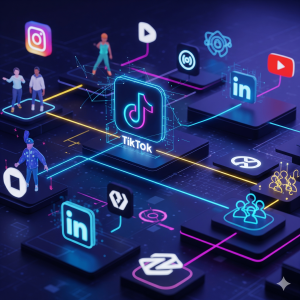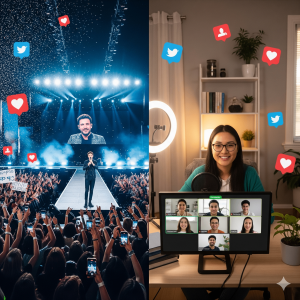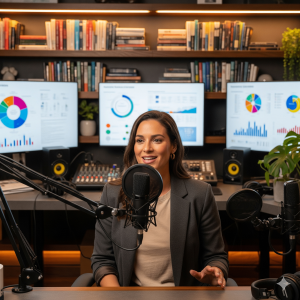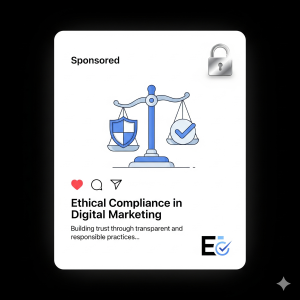Introduction

Influencer marketing has evolved from a niche experiment into a multi-billion-dollar industry. While it was once focused on celebrities, it now includes creators, micro-influencers, and even AI-generated personalities. As social platforms change, so do the opportunities and challenges in influencer marketing. This article looks at the future of influencer marketing, emerging trends, and what brands can do to stay ahead.
1. From Celebrities to Micro and Nano Influencers

In the early days, influencer campaigns centered on celebrity endorsements. Today, the shift is clear. Micro influencers (10K to 100K followers) and nano influencers (1K to 10K followers) are gaining value due to their higher engagement rates and stronger community trust.
Future outlook: Brands will prioritize authenticity and niche audiences over sheer follower counts. They will work with multiple smaller influencers to achieve a broader yet more meaningful reach.
2. Rise of AI and Virtual Influencers

AI technology is creating hyper-realistic virtual influencers—digital personas that never sleep, don’t ask for payment raises, and are fully controlled by brands. While human relatability remains important, AI influencers are becoming more prominent in fashion, gaming, and tech sectors.
Future outlook: Expect hybrid campaigns in which human influencers work alongside AI avatars, offering both authenticity and futuristic appeal.
3. Social Commerce Integration

Influencer marketing is merging with social commerce. Platforms like TikTok, Instagram, and YouTube now allow in-app purchases through shoppable posts and live streams. Influencers are not just promoters but also direct sales drivers.
Future outlook: Influencers will increasingly serve as “digital shopfronts,” guiding followers from discovery to purchase without leaving the platform.
4. Long-Form Content and Thought Leadership

While short videos dominate, long-form podcasts, YouTube explainers, and LinkedIn thought leadership posts are becoming more significant. Influencers who can teach, inform, or inspire will gain authority in specialized industries.
Future outlook: Brands will seek influencers who combine entertainment with education, providing more depth and fostering long-term brand alignment.
5. Greater Emphasis on Transparency and Regulation

As investment in influencer marketing rises, so does scrutiny. Regulators in various countries now require clear disclosure of paid promotions. Audiences also expect honesty and value.
Future outlook: Authentic storytelling and transparent labeling will become essential. Brands that ignore disclosure risk losing trust.
6. Data-Driven Influencer Partnerships

Choosing influencers is shifting from instinct to data-driven decisions. Brands are using AI analytics to measure engagement quality, audience demographics, sentiment, and ROI.
Future outlook: Metrics like engagement authenticity, follower quality, and conversion tracking will guide campaign planning more than vanity follower counts.
7. Community-First Collaboration

Influencers are becoming community builders. Instead of one-time sponsored posts, brands will collaborate with influencers to co-create products, host events, or lead communities.
Future outlook: Expect influencers to transform into brand collaborators and co-creators, with revenue-sharing models becoming more frequent.
Conclusion

The future of influencer marketing is becoming more authentic, data-driven, and technology-powered. From micro-influencers to AI avatars, and from social commerce to community co-creation, the landscape is changing quickly. Brands that thrive will emphasize authenticity, innovation, and transparency while using both human and virtual voices to connect with audiences.
Influencer marketing is now about more than visibility. It’s about trust, conversation, and building long-term relationships.